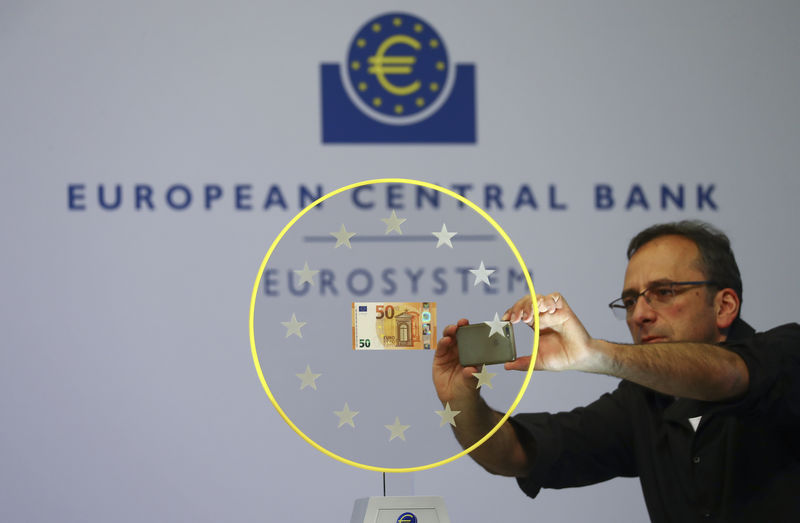S&P 500 slips, but losses kept in check as Nvidia climbs ahead of results
Investing.com -- The European Central Bank is expected to continue cutting interest rates as economic conditions across the Eurozone warrant further easing, according to BCA Research.
The ECB’s latest 25-basis-point cut, bringing the benchmark rate to 2.5%, was widely anticipated. However, the shift in the central bank’s language—from describing policy as “restrictive” to “meaningfully less restrictive”—signals a clear move toward a more accommodative stance.
A combination of slowing inflation, weakening labor market indicators, and risks to economic growth supports the case for additional rate cuts.
February data showed services inflation easing to a 10-month low of 3.7%, while wage growth is also slowing. The ECB’s wage tracker recorded a decline from 5.4% in November 2024 to 1.3% toward the end of the year.
Additionally, businesses are struggling to pass on rising input costs to consumers, leading to a decline in unit profits.
These disinflationary trends suggest that inflation is cooling at a pace consistent with the ECB’s objectives, allowing room for further monetary easing.
The labor market is also showing signs of softening. While the Eurozone’s unemployment rate remains at a record low of 6.2%, job vacancies are falling in key economies such as Germany and France.
A closer look at regional disparities reveals that unemployment in Southern Europe remains structurally high at 8%, indicating that these economies are still far from full employment. Surveys also point to declining payroll growth, further limiting domestic inflationary pressures.
The broader economic outlook remains uncertain, particularly due to geopolitical and trade risks. European Commission data indicates that business investment is likely to decline further in 2025, as companies remain cautious amid weak demand and policy uncertainty.
Additionally, concerns over potential U.S. trade restrictions under a second Trump administration add to downside risks for European exports. These factors are contributing to a more fragile growth outlook, reinforcing the ECB’s case for continued rate cuts.
Despite this, fiscal policy developments complicate the picture for the ECB. Germany’s push for greater fiscal expansion, alongside discussions on common Eurozone defense spending, could eventually lift the region’s neutral interest rate.
While this may limit the long-term depth of the ECB’s easing cycle, the near-term impact of looser fiscal policy remains muted due to political hurdles and implementation delays.
In the meantime, higher sovereign bond yields and a stronger euro are tightening financial conditions, partially offsetting the ECB’s monetary stimulus.
Market reactions suggest that investors may be overestimating the pace of policy shifts. The sharp rise in German bond yields and the euro’s rapid appreciation indicate that expectations for higher rates in the future have already been priced in.
However, BCA Research argues that these moves are overdone in the near term. The firm advises caution, suggesting that investors should wait for pullbacks before making significant bets on rising yields or a stronger euro.
The ECB will likely cut rates in April and June, aiming for 2% by summer. Further cuts hinge on inflation, jobs, and the economy. Worse-than-expected trade or growth could force even deeper cuts.
